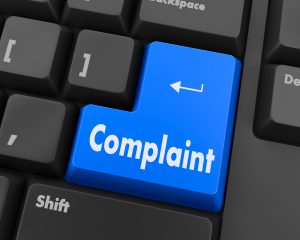Lessons from our audits of complaints procedures
Fair and transparent complaints procedures give Costs Lawyers’ clients justified confidence that any complaints will be handled appropriately.
To improve the quality of Costs Lawyers’ complaints procedures, the CLSB carries out an annual audit as part of its wider supervision programme.
The Costs Lawyer Handbook contains a Guidance Note intended to help Costs Lawyers produce an effective procedure for handling first-tier complaints. The guidance details requirements for a complaints procedure, and those requirements form the basis of the audit. The guidance also contains a model complaints procedure that Costs Lawyers can adapt for their own use.
This page highlights some common mistakes that we have identified in our annual audits.
Common mistakes
1. Providing out of date contact details
Complaints procedures must include contact details for both the Legal Ombudsman and CLSB. Less than 10 of the 81 procedures we have audited in the last three years had correct contact details for both the Legal Ombudsman and CLSB! Make sure your procedure is reviewed regularly and kept up to date with any changes.
2. Missing information
As well as not providing the correct contact details, the majority of procedures we audited failed to advise complainants of an approved alternative dispute resolution body. They also failed to encourage complaints to be made as soon as possible and set out the time limits for raising unresolved complaints with CLSB and the Legal Ombudsman.
Very few complaints procedures we audit state the date they were effective or updated. And one that did was last reviewed over 13 years ago!
Only 20 of the total 81 audited provided correct information on what the complainant should do if they are not satisfied with the outcome, and the majority did not give timescales for resolving complaints, nor time limits for raising unresolved complaints with CLSB or the Legal Ombudsman.
3. Confusing the role of CLSB & ACL
The CLSB has been the regulator of Costs Lawyers since 2011. The Association of Costs Lawyers (ACL) is the profession’s representative body, and does not play any role in dealing with complaints.
The CLSB is the organisation that needs to be named in the complaints procedure, so that clients know where to turn if they want to escalate a complaint.
More information about the difference between the CLSB and ACL can be found on the Who We Are page of our website.
4. Notification of complaints
During the audits, we found several confusing references to clients having a right to complain to ACL (which they don’t), and Costs Lawyers notifying ACL of complaints made. Complaints should be notified to CLSB in the annual regulatory return, which is part of the application for a new practising certificate. Complaints need not be reported to ACL, nor the Legal Ombudsman.
5. Using out of date guidance
Guidance Notes are regularly reviewed and updated when necessary. For example the Legal Ombudsman changed their scheme rules, including the timescales for complaints to be raised with effect from 1 April 2023. Many of the complaints procedures we audited had not been updated for many years and were therefore not in line with the current Guidance.
Our website always has up to date versions of Guidance Notes and we always alert regulated Costs Lawyers to updated versions in our newsletters.
5. Using the guidance as a complaints procedure
Several of the procedures we audited had reproduced the text of an out of date Guidance Note almost in its entirety. This meant the procedure did not explain how the Costs Lawyer’s own complaints process worked and was not drafted in a clear an accessible way. Addressing your complaints procedure to your clients is the best way to ensure it is clear and simple for them to understand.
A model complaints procedure is included in the current Guidance Note. You can use this as the basis for updating your own complaints procedure, adapting it as appropriate for your particularly circumstances.
Getting your complaints procedure ready for audit
Most of the revised complaints procedures submitted to us so far following audits have used our model complaints procedure either mainly or wholly. There is no requirement to use this, but if you do then you can take comfort that your procedure will be compliant. As our guidance, and the wider requirements and legislation, change in future we will update the model procedure whenever necessary.
The checklist we use to audit complaints procedues is included in our Supervision Framework: Complaints procedures on the Supervision webpage.
You might also like to see the following Spotlight articles from our newsletters:
- Good complaint handling
Steve Pearson, Deputy Chief Ombudsman, Legal Ombudsman (June 2021) - Reducing complaints from clients
Paul McFadden, Chief Ombudsman, Legal Ombudsman (March 2022)
We undertake an audit of complaints procedures every year – make sure yours is ready!

